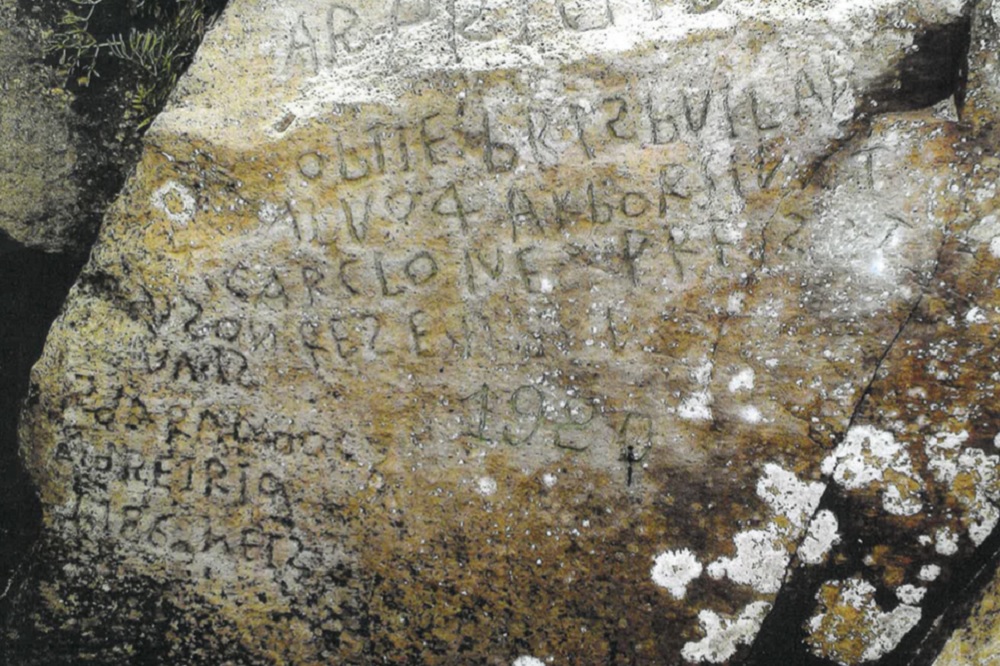Mysterious Brittany rock inscription ‘may be Welsh’

A €2,000 competition launched to help decipher a mysterious 230-year-old inscription found carved into a rock slab discovered on the Brittany coast has revealed that it may have been written in Welsh.
The meter-high stone which is only accessible at low tide was discovered three years ago in a cove in Brittany bearing 20 lines of inscription.
The mystery writing, which had defied all attempts at interpretation by academics, was thought by many to be old Breton or Basque, and that the person who wrote it may only have been semi-literate.
Historian Roger Faligot and artist Alain Robet submitted a translation in which they claimed the words were written in Breton, but they believe some of the words were written in the Welsh language, and their translation reads: “He was the incarnation of courage and joie de vivre. Somewhere on the island, he was struck and he is dead.”
Noël René Toudic, an English teacher and Celtic language expert, also worked on the stone’s message on the assumption that the writer was a semi-literate man speaking 18th century Breton and his translation reads: “Serge died when with no skill at rowing, his boat was tipped over by the wind.”
A panel of historians judged all the entries and declared the “two winning theories” were the most plausible interpretations. Mayor Dominique Cap says the two translations that were forwarded differed slightly, but the resulting stories were “very similar” and both winners concurred that the inscription was a remembrance of a man who had died at sea.
These two winning entries will split the €2,000 prize money.
Upside-down
Véronique Martin, a member of the council, from the village of Plougastel-Daoulas in Brittany, came up with the idea of holding a competition to crack the inscription.
News of the competition spread through social media and attracted over 60 complete translations. Most entries came from France but contestants entered from the US and as far as Thailand.
Martin said the competition mainly attracted “treasure hunters, and people who are passionate about research and solving mysteries”.
Some of the letters are upside-down and there are even some Scandinavian-style Ø letters present.
The years ‘1786 AD’ and ‘1787 AD’ are carved on the stone which dates the inscription to a few years before the French Revolution. It also includes images of a ship, heart and carved cross.
Support our Nation today
For the price of a cup of coffee a month you can help us create an independent, not-for-profit, national news service for the people of Wales, by the people of Wales.






As a man with halen yn y gwaed I love this story. A salty voice comes through clear and true. Leetle muddled though: can’t see how “he was the incarnation…” and “Serge died…” can be translations of the same line though, which is how they’re presented! Would love to read all 20 lines
URL i’r testun llawn? Link to full text?
Some photos here: http://ciphermysteries.com/2019/05/13/plougastel-inscription-photographs
This web page gives the text:
http://ciphermysteries.com/2019/05/10/the-mysterious-stone-near-plougastel-daoulas-continued
Llydaweg, dw i’n meddwl.
Certainly has some Breton words in it among all the stuff that needs expert analysis.
Bit in the middle looks like 1980 ??
Welsh, sure to be. What else in Dowlais?